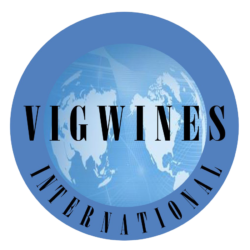E-Energy
A growing demand for energy and depleting fossilbased resources are spurring us on to develop new energy solutions. In particular, we must strive to increase energy efficiency, develop renewable energies and reduce greenhouse gas emissions. The complex nature of energy solutions demands, first and foremost, networks for the exchange of information and smart systems for analysing and processing data. Information and communication technologies (ICT), which furnish the main tools required in the area of energy supply, have not yet received due attention. This is a mistake because the latest studies and expert opinions make it clear that further development of the energy industry will be impossible without fully drawing on the potential of digital intelligence and networking.
The German Federal Government has acknowledged this shortcoming and launched the beacon project “E-Energy: ICT-based Energy System of the Future” while new activities have been initiated by the Federal Ministry for Economic Affairs and Energy (BMWi).
E-Energy stands for:
- comprehensive digital interconnection,
- computer-based control and
- computer-based monitoring of the entire system.
In the E-Energy project, model regions will demonstrate how the tremendous potential for optimisation presented by information and communication technologies (ICT) can be best tapped to achieve greater efficiency, supply security and environmental compatibility (cornerstones of energy and climate policy) in power supply. Furthermore, the information and energy industry will be invigorated to develop new jobs and markets. In this regard, standards will be developed and the new E-Energy solutions from the model regions will be transferred to other energy supply systems. To enable the capacities to span various industries, numerous research institutes, power companies, and businesses are participating in the beacon project.
New solutions for the electricity sector
The electricity sector is the first area to be addressed by the project. The challenges in this area are particularly high. The generation and retail markets are opening up with the progressive liberalisation and decentralisation of power generation and distribution, thus resulting in greater competition and more complex market relations. Centralised large-scale power stations will gradually become less useful and will make way for distributed and weather-dependent electricity generators of various sizes and functions. The one-way system of transferring energy from a large-scale power station to the consumer will soon be a thing of the past. It will be replaced by a complex, dynamic network of electricity producers and consumers. The future lies in cross-border integrated networks with two-way power traffic and decentralised, weather-dependent power feed-in. The challenge is to develop an ICT-based system that constantly strikes a balance between power generation and consumption and which also ensures optimum utilisation of the power grid and dynamic use of the growing storage capacities. Furthermore, the provision of electronic services is becoming increasingly important for business partners and clients.
In an effort to accelerate innovation developments, the Federal Ministery of Economics and Technology (now: Federal Ministry for Economic Affairs and Energy) announced an E-Energy technology competition for the development of integral ideas and system concepts for an “Internet of Energy” in April 2007.
Model projects are to show specifically:
- how the “Internet of Energy” can make electronic legal transactions and business dealings between all market participants secure and efficient,
- how the technical components and infrastructure of the overall electricity system can be intelligently monitored, controlled and regulated, and
- how direct linkages can be made to electronic market activities.
The aim is to achieve efficient, prompt and transparent co-ordination of the energy supply, energy demand and complementary services in and between all areas of the power supply system. This not only necessitates technological progress but also the adjustment of organisational structures and general frameworks.
To back up the model projects, the Federal Ministry has commissioned research which will directly link up the model regions.
No loss of comfort
Smart electricity meters play an important role in the e-energy solutions. In combination with new digital gateway technologies, these will replace mechanical meters, including in private households, and will assume important control functions as energy centres for the distributed generators and consumers.
The new power meters boast a wide range of capabilities such as:
- individual rate storage,
- load profiling,
- easy remote reading and control or
- connection to in-house software.
The meters also act as an interface between the end customer and the grid network operators, suppliers and measuring point operators.
Furthermore, e-energy solutions also make it possible to combine and co-ordinate different energy sources intelligently. This can, for example, offset weather-related fluctuations in renewables. This means that even in strong wind or sunshine, there is no need to dispense with comfort, energy security or quality.
Overall, e-energy means that
- the transaction costs are cut,
- business processes are made more transparent,
- the expansion of renewable energy resources is made possible,
- the existing grid capacities are well utilised,
- the load curves are smoothed out, and
- the need for control energy can be reduced.
Our competition to establish E-Energy model regions received a large number of entries. An independent jury selected the six winning projects, namely:
- E-DeMa, Ruhr area model region: Use of an “intelligent” gateway to control energy supply and consumption
- eTelligence, Cuxhaven model region: Use of an intelligent energy management system to integrated electricity that is generated locally
- MEREGIO, Baden model region: Integration of different power generators via smart metering
- Mannheim model city, Rhine-Neckar model region: Adaptation to a variable electricity price via the “Energy Butler”
- RegModHarz, Harz model region: Provision of “clean” energy from the renewables-based combined power plant
- SmartW@TTS, Aachen model region: Use of a web-based “trading floor” to counterbalance fluctuations in renewable energy


